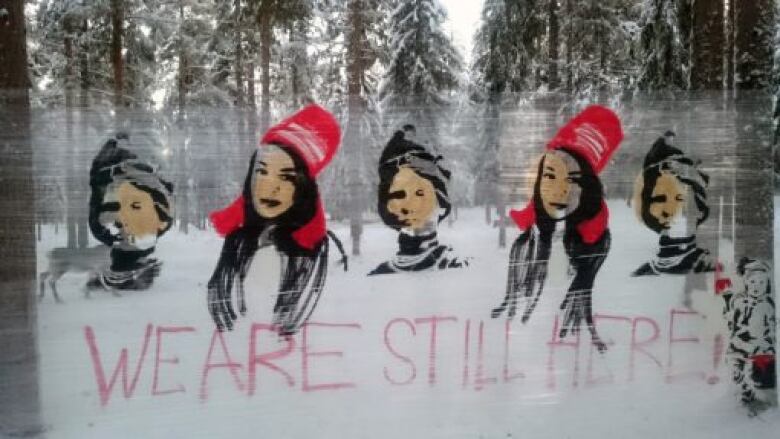Venice Biennale dedicates space for Indigenous art with Sámi Pavilion
CBC News | April 18, 2022
Categories: news
Pavilion will be 'putting our stories at the forefront,' says curator
Rhiannon Johnson · CBC News · Posted: Apr 18, 2022 4:00 AM ET | Last Updated: April 18

A dedicated space will bring together Indigenous groups and nations from across the world to connect and share knowledge at this year's Venice Biennale, an art exhibition held every two years in the Italian city.
In previous years, the Nordic Pavilion has represented Norway, Finland and Sweden, which are all part of Sápmi, the traditional territory of the Indigenous Sámi people. This year the pavilion has been renamed the Sámi Pavilion.
For Liisa-Ravna Finbog, the pavilion's co-curator, this move is significant because the Biennale is a space where stories about Indigenous people have often been told from an outside perspective.
"Now we are going in and we are not so much as decolonizing as we are Indigenizing, putting our stories at the forefront, centring everything that makes our communities Indigenous and sharing this with the world," said Finbog.
Finbog is a Sámi scholar and duojár (Sámi storyteller and knowledge-holder) from Oslo, Vaapste, and Skánit in the Norwegian part of Sápmi.

The pavilion will feature three Sámi artists: Pauliina Feodoroff, an artist, theatre director, Sámi land guardian, and politician, with roots in the Finnish and Russian parts of Sápmi; Máret Ánne Sar, a visual artist and author based in Guovdageaidnu, in the Norwegian side of Sápmi who comes from a reindeer herding family who struggled to protect their herds from state-sanctioned slaughter, which deeply influences her work; and Anders Sunna, who comes from a family of forest reindeer herders in Kieksiäisvaara on the Swedish side of Sápmi and chronicles the exploitation of land and natural resources through painting, graffiti, and sculptures.
- What is the Venice Biennale and why should we care?
- Vancouver artist Stan Douglas to represent Canada at Venice Biennale
As part of the extended program of the Sámi Pavilion will also be a four-day aabaakwad gathering. Aabaakwad ("it clears after a storm" in Anishinaabemowin) is an annual Indigenous-led gathering about art that alternates between Toronto and international venues.
Wanda Nanibush, aabaakwad event co-founder, is the curator of Indigenous art at the Art Gallery of Ontario and is serving as an international advisor on the Sámi Pavilion.
- Illusions are real: Quebec City's art biennial returns with a nod to the politics of post-truth
- How to explore the 2022 Toronto Biennial of Art
The extended program will feature performances, talks, poetry and music by artists Rebecca Belmore, Stan Douglas, Jeremy Dutcher, Jeffrey Gibson, New World Order and more.
"It will give real presence and visibility to Indigenous people in support of this kind of move for Sámi sovereignty and aabaakwad itself as a kind of a sovereign space within the international art world as well for Indigenous artists," said Nanibush.
The Venice Biennale begins April 23 and will run until Nov. 27.


